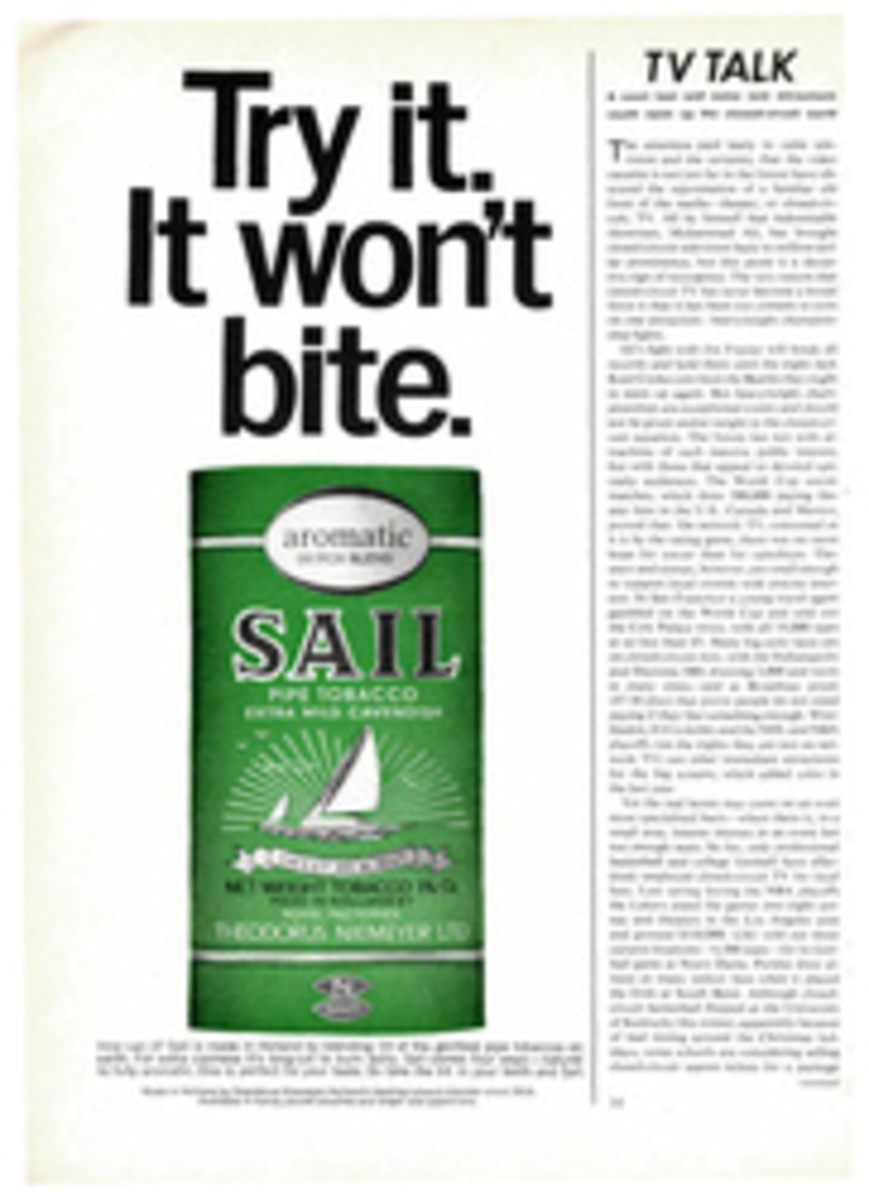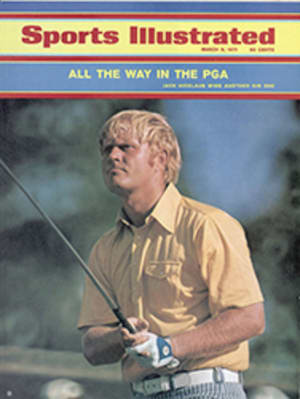
Powerful glasses, sir, but are they good?
For the uncertain buyer, the man perplexed by magnification formulas and the intricacies of lenses, purchasing binoculars can be a discomforting experience. In a cramped shop he lifts the glasses to his eyes, muddles with the focusing and finds little reassurance in the blur and warp of images. "Now aren't they remarkable?" the salesman is saying. "Really superb."
Well, maybe superb and maybe not. A salesman at New York's Willoughby-Peerless, which sells as many as 300 pairs of binoculars in a week, estimates that three out of four people have no notion how to go about purchasing binoculars. At the New York headquarters of Zeiss, the prestige binocular manufacturer, a German expert declares, "People seem to believe the bigger, the better—the higher the power, the better equipped they are. That is a mistake. Often it is just the opposite."
Certain factors must be considered in the selection of binoculars: among them, the sports you will use them for, the price you can pay and even perhaps your age, health and physique. The starting point is the peculiar algebra of binoculars—3x20, 6x30, 7x42, 10x50. The first number indicates the degree of magnification: a bird viewed through the glasses will appear to be three times, six times, seven times or 10 times larger than it would to the unaided eye. The second number in the formula is the diameter in millimeters of the front lens and serves as a measure of the light-gathering quality of the binoculars. The higher this second number is the better the viewer will see in dim light, in fog and at night. The rangers on fire towers in national forests and game wardens patrolling the Everglades at twilight use 8x50 and 10x50 binoculars.
High-powered glasses, those nine-power and up, require steady hands. The slightest movement of these glasses causes jumping images. Because of this, birdwatchers using 10- and 15-power binoculars mount them on tripods. An elderly person, or one whose hands are the least bit shaky, should never use more than six-power glasses. Yachtsmen are limited in much the same way because of the pitch and motion of their boats. They find glasses over seven-power uncomfortable. What they sacrifice in magnification, however, they can pick up with good light-gathering binoculars, like 7x42s or 7x50s. These are really necessary for locating nautical markers in foul weather.
A person using 7x50 binoculars receives no special advantage in sunlight, while watching an afternoon football game, for example. Someone using glasses that size will see no better or brighter image than another using a 7x30 model. That is because the human eye adjusts, the pupil dilating in sunlight, and no matter how bright an image the binoculars pick up and transmit through the lenses, the eye will take in only a small portion of the light. At night, when the pupil grows larger and opens to its maximum, it is able to absorb the wider beam from the 7x50 glasses. Well, then, why not buy 7x50s even if your primary use is in full daylight? The answer is that because of their size, the 7x50 glasses are normally much larger and heavier than 7x30s and therefore more of a nuisance to carry.
Fred Capossela, for 36 years the race caller at New York's thoroughbred tracks, uses extraordinarily strong Zeiss 15x60 glasses but, he explains, he needs instant definition. He must be able to pick up a pink sash or a blue cap half a mile away and often through rain, fog or flying mud. "I would never recommend binoculars like that for the average racegoer," Capossela says. "For the man in the grandstand I'd suggest a more restful glass, certainly nothing any larger than 7x50."
Edward Erickson of the National Ski Patrol in Denver advocates 7x35 binoculars for use in snow country. He also suggests that amber sun caps be put over the lenses to cut the harsh intensity of light.
Among hikers, low-powered binoculars—6x30s—are popular. In part this is because compactness and lighter weight are desirable factors. Also, if the walker is tired when he uses 7- or 8-power binoculars, the image tends to bounce around crazily.
The buyer should decide before going into a store on the power and brightness he needs (7x35 glasses are recommended for the all-round sports fan) and about how much he will spend. If he is a mountain climber his glasses will knock continually against rocks and ledges, and it is wiser to purchase two cheap pairs than one expensive pair. Ordinarily, the better the binoculars the more jar they can stand, but there are limits to everything. "To test binoculars for durability you should drop them," says Werner Fallet of Zeiss, with a smile. "But, of course, no salesman will let you."
No matter how little a person intends to spend, he should ask to see Zeiss, Leitz or other top quality binoculars and compare them with the model he is planning to buy. "Take your time." Dick Cohn of Willoughby-Peerless says, "and if the salesman doesn't want to give you the time, go someplace else. Your eyes have to adapt to binoculars—like a new pair of spectacles. Some of them can strain your eyes, and the cheaper binoculars vary in quality, even among the same model. I've had people spend three hours before deciding."
The first maneuver is to focus the glasses. If you have chosen seven-power binoculars, pick out a sign with lettering about 60 feet away (the distance should be about 10 times your height). Put the glasses to your eyes and, keeping both eyes open, place a hand over the end of the right barrel. Move the center-focusing dial until the image is clear. Then put a hand over the left barrel and turn the individual-focusing dial on the right eyepiece until the image is sharp. Now both eyes should be properly focused. With premium binoculars—$300 Leitz and Zeiss models—amazing precision can be achieved. The man with 20/80 vision can twist the dials and get the same prescription that he does from his optician for eyeglasses.
Once the glasses are focused, comparisons can be made between quality and cheaper models. The less expensive the glass the more indefinition there is around the perimeter of your view. There will be color fringes on the edges of the circle. Look at a square sign. Do the edges remain straight or do they bulge or appear to cave in? Look through the binoculars at the surface of a distant table or counter. Is it well defined or does the tabletop appear to buckle? Aberrations are common in poorly constructed binoculars. And always examine the glasses for scratched lenses or nicked frames. It is foolish to buy a pair that has been mishandled. The lenses, though set in cement, will shift if knocked about.
No pair is worthwhile unless it has prisms. These are apparent if you hold the binoculars about a foot and a half from the eyes. In the eyepieces you will see a round circle of light or a circle in a dim square in less expensive models.
Coated lenses are advisable. Inside a pair of binoculars there are more than a dozen surfaces that should be treated. To test for this, hold the binoculars backward, with the eyepieces toward a light. Look through the big lenses—called the objectives—and move the glasses slowly back and forth. If you see something inside that looks like a line of distant auto lights, the lenses have not been sufficiently coated.
These are simple, practical tests to make before purchasing. But there are other considerations, too. A man with large hands obviously will be uncomfortable with binoculars that are too small. The eyeglass wearer will get a better view using models with adjustable eyecups. Perhaps the buyer wants style—the latest rage is the long, thin-barreled model. The trophy hunter may prefer wide-angle binoculars, which are fine for scanning a mountainside, but they are hardly what a birdwatcher needs. Zoom glasses are not recommended, though they are advertised as five different binoculars in one. The zooms often go out of focus, and until they are perfected and operate with the precision of camera-zoom lenses they are not a good buy.
As to price, below $40 you pay your money and you take your chances. In the $50 to $70 range you can get very serviceable glasses among name brands, such as Nikon and Bushnell. But if you want the best, figure on $200 and up.
And be sure to remember, there is more to selecting binoculars than meets the casual eye.
THE BINOCULARS SOME OF THE EXPERTS USE
Gil Brandt, chief scout for the Dallas Cowboys: "Right now I'm using a pair of Bushnell 7x35s. I've owned them for four years, which is a record for me because I usually wind up leaving my binoculars in an airport or in the trunk of a rented car. I'd advise a football fan to select a pair priced reasonably and not too heavy, something not too cumbersome to have with you when you're watching a game."
Jim Whittaker, mountain climber and first American to reach the top of Mount Everest: "My personal choice is the Leitz 8x32. They are extremely light binoculars and are only 4½ inches in length, but they magnify with remarkable clarity and, what is important to me since often I cannot protect my equipment, the prism is shock-, dust- and waterproof. Of course, they're terribly expensive."
Alfred Gwynne Vanderbilt, head of the New York Racing Association: "I use big ones, Zeiss 15x60s. However, I'm 58 years old now, and in the process of aging maybe I'll have to change. Let me just see if they feel good for another season. Yes, it looks that way."
Mary Hemingway, widow of the author: "All of Ernest's were left in Cuba. There must have been six or seven pairs that we had between us. I know he had some giant ones that looked as though they were a foot long and weighed maybe five pounds."

